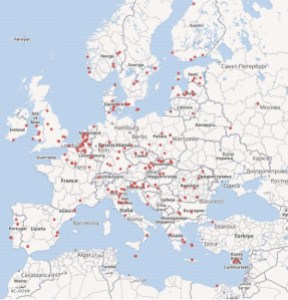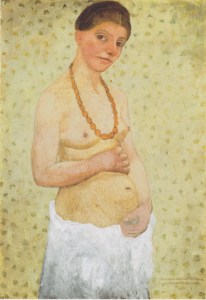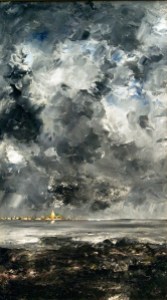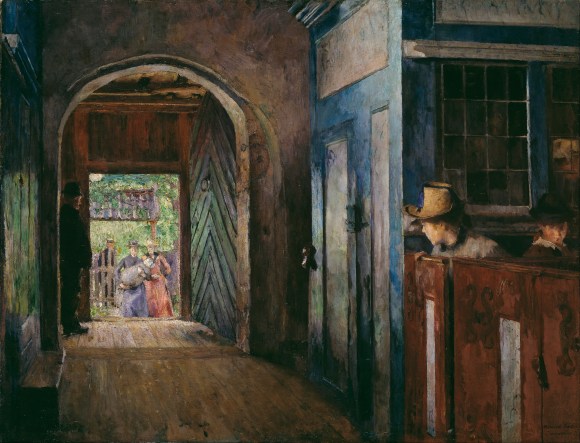
A video about the Art History Challenge, the results and the winners. Also available on Wikimedia Commons.
After six weeks of editing, the Art History Challenge on Wikipedia and Wikidata in support of Europeana 280 has now finished.
At the start of competition there were 472 Wikipedia pre-existing articles across all 39 tracked languages (an average of 12 articles per language). Now, there are now over 1,300 articles—an average of 34 per language. This makes this challenge the largest ever GLAM-Wiki competition, the first to incorporate Wikidata and the second largest Wikipedia translation event after its sister-competition, CEE Spring.
But most importantly, volunteer participants from across the continent have learned about each other’s art history and, by sharing that information, helped spread it to a wider audience.
By connecting these artworks to the wider Wikidata repository, it is possible to query – and visualise – the collections in new ways. For example, on an interactive timeline.

Going even further, it is possible to query related facts that are not even included in the original metadata – providing an “added value” service that is not possible without the power of linked open data. For example, an interactive map showing the birthplace of the artists behind the works.

(Thanks to Antoine Courtin from France for creating these visualisations using the Wikidata Query Service)
The overall winner of the challenge is Spasimir (user:Спасимир) from Septemvri, Bulgaria. He has contributed a prodigious amount of new material – writing 58 new articles and translated 31 others into the Bulgarian Wikipedia! For the last three years Spasimir has worked with the digitised photograph collections of the Bulgarian State Archives. Because of this his favourite work is in the the 18th century collection of botanical illustrations, the watercolour Choix des plus belles fleurs below, from the selection of works provided by Lichtenstein (in Europeana).

Bengt Oberger (user:Boberger) from Stockholm, Sweden came second in the challenge, having written dozens of articles for the competition in the Swedish Wikipedia but also by adding artwork labels to Wikidata in Swedish, Finnish, German, Italian, Norwegian, Portuguese, Latvian, Danish, and Polish! This helps to increase the discoverability of those works and Europeana hopes to incorporate these translations into our own search engine results. As his particular favourites to write about were in Swedish, Bengt nominated Paula Modersohn-Becker’s 1906 work below, from the German selection: Self portrait on the sixth anniversary of marriage (in Europeana).

In third place was Marisa (user:MarisaLR) from Barcelona, Spain. Her method was to use the new Content Translation Tool to create articles into the Asturian, Catalan and Spanish Wikipedias. Of course, some languages received more new content than others. Unsurprisingly, English Wikipedia received the most new content, but thanks to the work of Spasimir and Marisa, the Bulgarian and Asturian Wikipedias came 2nd and 3rd respectively. Marisa’s volunteering has previously featured by the Catalan Wikipedia community for her work on improving the quality of content relating to the European Union. Her favourite work to write about was The City by August Strindberg (1903) below from the Swedish selection (in Europeana).

And a special mention also goes to fourth placed Nicolas Vigneron (user:VIGNERON) from Rennes, France, who was featured in the Wikimedia blog for taking an early points lead in the competition by adding artwork labels on Wikidata in the Breton language.
As well as the overall and national prizes offered by Europeana, both Wikimedia Sweden/Swedish National Gallery and Wikimedia Norway/Norwegian National Gallery offered extra incentives. Winners of these prizes included Jane Darnell (user:Jane023) representing the Netherlands, who wrote the best article about a female artist’s work on Harriet Backer’s Christening in Tanum Church (1892) below from the Norwegian selection and Ritta Austere from Finland who – with 400 added statements to Wikidata—became the most active newly registered Wikimedia volunteer.

As importantly, volunteers from countries beyond those directly involved in Europeana 280 also became involved. For example, Armine Aghayan from Armenia and Andrei Kurbiko from Ukraine both brought many artworks into their local Wikipedia languages. Armine chose The Art Gallery of Jan Gildemeester Janszfrom the Netherlands selection as her favourite due to its detail meanwhile Andrei, who declares a love of scandinavian culture, particularly enjoyed translating Boys Drawing from the Swedish selection.
Now that the Art History Challenge has concluded, already some of the work is taking effect. The TED organisation’s own Speakers Challenge, uses many of the tools built to track and report about the Art History Challenge.
Liam Wyatt/Wittylama, GLAMwiki coordinator
Europeana
The views expressed in this post are not necessarily those of the Wikimedia Foundation or Wikipedia; responses and critical commentary are invited in the comments section below.

Can you help us translate this article?
In order for this article to reach as many people as possible we would like your help. Can you translate this article to get the message out?
Start translation